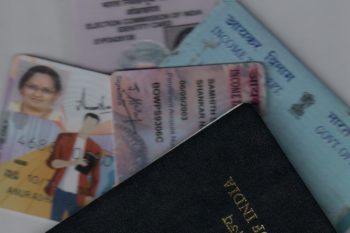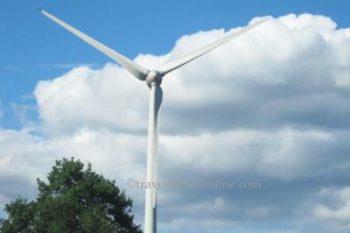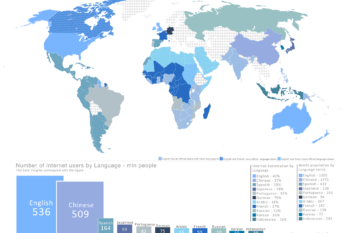One of the peculiarities of living in a country as big as the USA that touches two oceans, two major gulfs, straddles the continental divide, and has climates ranging from sub-tropical forests, to snow-covered mountain ranges, all the way to sub-arctic (if Alaska counts)… is the differences in the weather, and to a lesser extent, natural disasters. The East Coast gets hurricanes, and the Northern seaboard can also get hammered with snow and “Nor’Easters” (storms blowing from the Northeast). The Midwest has abysmal snowy winters, thunderstorms, and tornadoes and in the Spring and Summer. The West coast has earthquakes, torrential rains, wildfires and sometimes mudslides. In the Pacific Northwest, it rains, then it rains, and sometimes it rains some more. The South sees severe Thunderstorms, tornadoes, hurricanes, and ice storms in the winter.
The upper central US can get down to -30 F (-34 C) during the winter, and as you drive along the highways you see miles and miles of snow fences set up to block the blowing snow during the wintertime. The central US is called “tornado alley” because… well, you get the idea. The Southwest has the heat, and sometimes flash flooding and wildfires, but generally has the most pleasant weather in the US. But that’s balanced by the fact that this region is home to rattlesnakes, pit vipers, giant centipedes, chiggers, ticks, black widow spiders, huge cactuses, mountain lions, bears, wolves, coyotes, scorpions, tarantulas, and other charming wildlife. I’ll take the snow, tornadoes, and traffic congestion, thank you very much.
Because the physical reality that Americans experience can vary so drastically, we interpret what’s “normal” differently. For example, Chicago, smack-dab in the middle of the Midwest, is a place of extremes. Winter is usually -10 to 20 degrees F, with very low humidity, and 90-100 F in the summer with swampy, oppressive humidity. Due to the extremes, many Midwesterners have a “tough” attitude towards the weather, especially the cold. We love to laugh at the Southerners and Californians complaining and shivering when the thermometer hits 50 F. Californians, on the other hand, tend to think that Midwesterners are complete idiots for living in a place with such conditions. Of course, most Californians I know don’t understand why anyone lives outside of California! It’s part of the culture, the perceived intrinsic “awesomeness” of California. When I worked out there in 2002, most people I worked with couldn’t find Ohio on a map (where I grew up), but they remembered “Chicaaaago” (emphasis on the accented A), which is where they decided I was from.
Due to its proximity to Lake Michigan, one of the biggest lakes in the world, flooding is almost never a reality in Chicago proper, at least on the lake front. Other than the Great Fires of the late 1800’s, the city has never been evacuated. This is in contrast to the Eastern Seaboard, Mississippi and Ohio River valleys, and Gulf of Mexico which have all seen evacuations due to hurricanes and flooding. It definitely has an effect on culture, if there is an expectation that you might have to uproot your entire life at a moment’s notice to flee a natural disaster!
Weather is just one more thing that makes Americans a little different in different areas. How does the weather affect the culture where you’re from?
Read more:
California’s North-South rivalry
Annie Hall and the New Yorkers’ view of Los Angeles
The rains continue in Zambia









So I guess I’m the only one who likes to talk about the weather, huh? 🙂
Tornadoes: check. Ice storms: check. Scorching heat: check. Snakes: check (saw one on the driveway…yikes!) Flash floods: check. Man, I love living in the South! hahahaha!
Well, we always say that the British love to talk about the weather, and if that’s true I am definitely British – I always seem to be talking about it haha.
I don’t know what we find to talk about though, we have nothing like the extremes that you guys get. This winter when I was back home the temperature went down to -10C (14F), which is the coldest I’ve ever experienced.
I reckon our weather is one reason the pub is so popular in the UK – when it’s cold and wet outside, there’s not much else to do if you want to be sociable. Or maybe that’s just our excuse 🙂
That’s definitely our excuse in Chicago! Yesterday was a good example. Started out sunny, then cloudy, then rain, which instantly turned into a torrent of giant snowflakes that almost hurt. We had a day at -10 F, and then it was in the low 50’s F, 4 days later.
Sean,
Your comments about Californians are too true. I’ve worked with a lot of transplanted east-coasters and midwesterners who laugh at Californian drivers when it starts to rain: everyone slows down to a crawl and are sooooo worried about a few drops of rain. Only the folks from the east and midwest are driving at a sensible speed.
Jason
Hi Jason. Totally… but the flip side is that it’s March 1st, which is basically the 5th month of winter for Chicago!. Any Midwesterners/East Coasters who can, take vacations to Cali, the Caribbean, Florida, etc. during the Winter. Two sides to every coin. 🙂